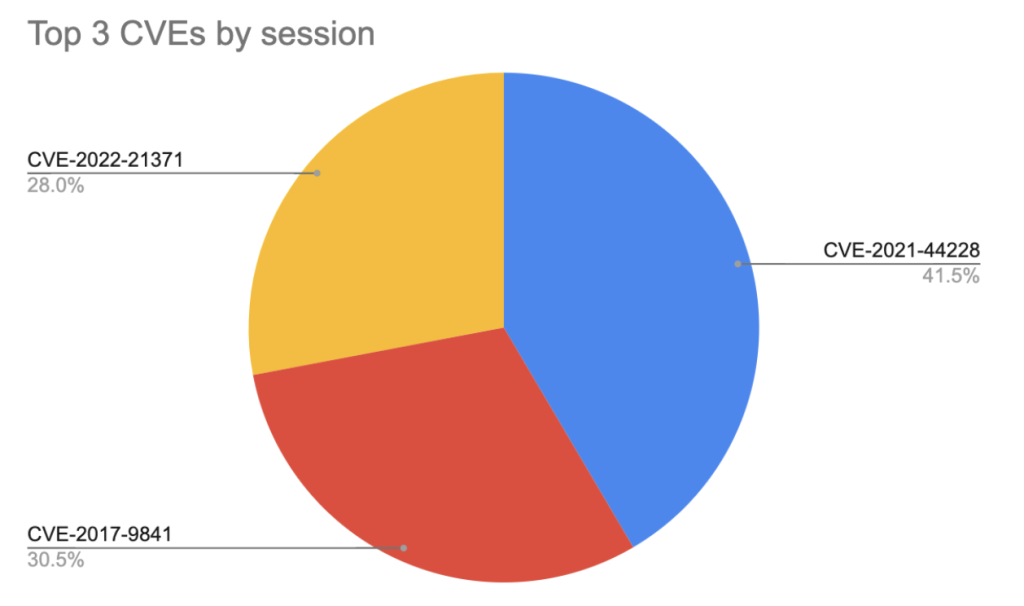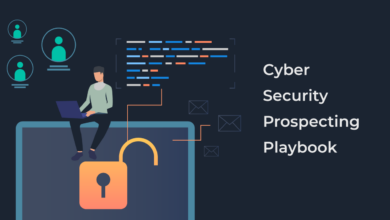
Defending against hackers in the public sector is a different beast
Defending against hackers in the public sector is a different beast. It’s not just about protecting data; it’s about safeguarding the very fabric of public trust. Think about it: a successful attack against a hospital system could mean lives lost, a breach at a government agency could expose sensitive citizen information, and a compromised election system could undermine democracy itself.
The stakes are exponentially higher, and the challenges – from legal hurdles to resource limitations – are unique. This post dives into the specific threats and strategies needed to secure our public institutions in this ever-evolving digital landscape.
We’ll explore the unique vulnerabilities of public sector systems, from outdated infrastructure to the sheer volume of data they handle. We’ll also examine the legal and regulatory landscape, the crucial role of employee training, and the importance of collaboration between agencies and the private sector. Get ready to delve into the complexities of protecting our public digital assets – it’s a battle worth fighting.
The Unique Challenges of Public Sector Cybersecurity

Protecting public sector organizations from cyberattacks presents a unique and complex challenge, far exceeding the difficulties faced by their private sector counterparts. This is due to a confluence of factors, including the sensitive nature of the data handled, extensive regulatory requirements, and often limited resources. The consequences of a successful breach in the public sector can be far-reaching, impacting national security, public trust, and essential services.
Defending against hackers in the public sector is a different beast altogether, demanding robust security measures across complex systems. The increasing reliance on cloud services makes solutions like those offered by bitglass and the rise of cloud security posture management crucial. This is especially true because public sector data breaches have far-reaching consequences, highlighting the need for proactive, comprehensive strategies to combat evolving cyber threats.
Heightened Security Risks in the Public Sector
Public sector organizations are prime targets for cyberattacks due to the vast amount of sensitive data they hold. This data, ranging from citizen personal information to national security secrets, is highly valuable to malicious actors. Unlike private companies that may primarily focus on protecting financial data, public entities must safeguard information critical to national infrastructure, public health, and the democratic process.
The potential impact of a successful breach extends far beyond financial losses, encompassing reputational damage, loss of public trust, and potential disruption of essential services. The sheer scale and complexity of public sector IT infrastructure also increases the attack surface, making it more challenging to secure.
Legal and Regulatory Compliance Requirements
Public sector cybersecurity strategies are heavily influenced by a complex web of legal and regulatory frameworks designed to protect sensitive data and ensure accountability. Compliance with regulations like HIPAA (for healthcare data), FERPA (for education data), and various state and federal privacy laws is mandatory. Failure to comply can result in significant fines, legal action, and reputational damage.
These regulations often dictate specific security controls, data handling procedures, and incident response protocols, adding layers of complexity to cybersecurity management. The evolving nature of these regulations also necessitates continuous adaptation and investment in security infrastructure.
Specific Vulnerabilities in Public Sector Systems, Defending against hackers in the public sector is a different beast
Public sector systems and infrastructure often exhibit vulnerabilities unique to their environment. Older legacy systems, often still in use due to budget constraints or integration challenges, are particularly vulnerable to exploitation. These systems may lack up-to-date security patches, making them easy targets for attackers. The interconnected nature of public sector networks, including those used for critical infrastructure, creates a cascading effect where a breach in one system can compromise others.
Furthermore, the reliance on third-party vendors for various IT services introduces additional security risks, as vulnerabilities in these vendors’ systems can indirectly compromise public sector networks. The widespread use of less secure protocols and technologies, often due to legacy reasons, also contributes to the vulnerability landscape.
Resource Constraints in Public Sector Cybersecurity
Public sector entities frequently face significant resource constraints, including limited budgets and staffing shortages. Competition for funding with other essential public services often leaves cybersecurity initiatives underfunded. This can lead to a lack of investment in advanced security technologies, insufficient training for IT staff, and delayed implementation of security updates. The difficulty in attracting and retaining skilled cybersecurity professionals further exacerbates the problem, leading to a skills gap that makes it challenging to effectively manage and mitigate security risks.
This disparity in resources when compared to the private sector, where budgets are often more flexible and talent acquisition more competitive, significantly impacts the ability of public sector organizations to maintain robust cybersecurity defenses.
Hypothetical Cyberattack Scenario and Consequences
Imagine a cyberattack targeting a state’s election management system. Attackers successfully infiltrate the system through a vulnerability in outdated voting machine software, altering vote counts before the results are tallied. The immediate consequence is a loss of public trust in the electoral process, potentially triggering social unrest and political instability. Beyond this, the attackers could exfiltrate sensitive voter data, leading to identity theft and fraud.
The long-term consequences include the need for expensive system upgrades, extensive forensic investigations, and potential legal challenges. The reputational damage to the state government would be significant, impacting future elections and public confidence in government institutions. The cost of remediation, including legal fees, system upgrades, and reputational repair, would be substantial, further straining already limited public resources.
Data Protection and Privacy in the Public Sector
Protecting citizen data is paramount for any public sector entity. The sheer volume of sensitive information handled – from social security numbers and medical records to financial details and voting preferences – necessitates a robust and multi-layered approach to cybersecurity. Failure to adequately protect this data can lead to devastating consequences, far exceeding simple financial losses.
Best Practices for Protecting Sensitive Citizen Data
Effective data protection requires a holistic strategy encompassing technical, procedural, and human elements. This includes implementing strong access controls, regularly updating software and systems, conducting thorough security audits, and providing comprehensive cybersecurity training for all staff. Data minimization – collecting only the necessary data and for specified, explicit, and legitimate purposes – is crucial. Furthermore, robust incident response plans should be in place to mitigate the impact of any breaches.
Regular vulnerability assessments and penetration testing help identify weaknesses before malicious actors can exploit them. Finally, a strong culture of security awareness, where data protection is everyone’s responsibility, is essential.
Defending against hackers in the public sector is a different beast altogether, demanding robust security measures across complex systems. Building secure applications is crucial, and the speed and efficiency of development offered by exploring options like domino app dev the low code and pro code future can be a game-changer. Ultimately, though, even the most efficiently built apps need constant vigilance against those looking to exploit vulnerabilities in public sector networks.
Implications of Data Breaches in the Public Sector
Data breaches in the public sector can have far-reaching and severe consequences. Reputational damage can be catastrophic, eroding public trust and impacting the legitimacy of the organization. Financial penalties, stemming from regulatory fines and legal action, can be substantial. Furthermore, breaches can expose citizens to identity theft, fraud, and other forms of harm, leading to significant individual distress and potential legal claims against the public body.
The loss of sensitive information can also compromise national security or critical infrastructure, depending on the nature of the data compromised. For example, a breach affecting healthcare records could lead to identity theft and medical fraud, while a breach involving national security information could have significant geopolitical implications.
The Role of Data Encryption and Anonymization
Data encryption plays a vital role in protecting sensitive information, both in transit and at rest. Encryption transforms data into an unreadable format, rendering it useless to unauthorized individuals even if a breach occurs. Strong encryption algorithms, coupled with secure key management practices, are crucial. Data anonymization techniques, such as data masking and pseudonymization, can further enhance privacy by removing or altering identifying information, reducing the risk of re-identification even if a breach happens.
For example, replacing a full name with a unique identifier protects the individual’s identity while preserving the utility of the data for research or statistical purposes. However, it’s important to note that anonymization is not foolproof and advanced techniques could potentially re-identify individuals in some cases.
Comparison of Data Protection Regulations
| Regulation | Geographic Scope | Key Focus | Penalties |
|---|---|---|---|
| GDPR (General Data Protection Regulation) | European Union and EEA | Individual rights, data protection by design, accountability | Up to €20 million or 4% of annual global turnover |
| HIPAA (Health Insurance Portability and Accountability Act) | United States | Protected health information (PHI) | Civil monetary penalties, criminal penalties |
| CCPA (California Consumer Privacy Act) | California, USA | Consumer rights regarding personal information | Civil penalties |
| PIPEDA (Personal Information Protection and Electronic Documents Act) | Canada | Protection of personal information | Administrative monetary penalties |
Key Differences Between Public and Private Sector Data Protection Strategies
While both sectors strive for data protection, significant differences exist in their approaches. Public sector entities face stricter regulatory scrutiny and higher public accountability. They often handle more sensitive data with broader implications for societal well-being. Resource constraints can also pose a challenge. Private sector entities, while also subject to regulations, often have more flexibility in their approach, driven by market forces and competitive pressures.
The focus on profitability can sometimes overshadow robust security measures. Furthermore, the public sector frequently deals with legacy systems, posing significant challenges for security upgrades and modernization. Conversely, private sector organizations might have more resources to invest in advanced security technologies.
Threat Landscape and Mitigation Strategies

Public sector organizations face a unique and constantly evolving threat landscape. Their critical infrastructure, sensitive data, and public trust make them prime targets for a wide range of cyberattacks. Understanding these threats and implementing robust mitigation strategies is paramount to maintaining operational continuity and protecting citizen data.
The sheer scale and complexity of public sector networks, coupled with often outdated technology and budgetary constraints, contribute to a heightened vulnerability. This necessitates a proactive, multi-layered approach to cybersecurity, incorporating threat intelligence, robust security architecture, and comprehensive employee training.
Prevalent Cyber Threats Targeting Public Sector Organizations
Phishing, ransomware, and insider threats represent some of the most prevalent cyber threats targeting public sector entities. Phishing attacks, often disguised as legitimate communications, aim to trick employees into revealing sensitive credentials or downloading malware. Ransomware attacks encrypt critical data, demanding payment for its release, potentially disrupting essential services. Insider threats, whether malicious or negligent, can compromise security from within the organization.
These threats often exploit human vulnerabilities and require a multi-faceted approach to mitigation, combining technical safeguards with security awareness training.
Advanced Persistent Threats (APTs) and Their Impact
Advanced Persistent Threats (APTs) are sophisticated, long-term cyberattacks typically conducted by state-sponsored actors or highly organized criminal groups. APTs often involve stealthy infiltration, persistent data exfiltration, and the exploitation of zero-day vulnerabilities. For example, a hypothetical APT targeting a national tax agency could involve the gradual compromise of systems over months, culminating in the theft of taxpayer data or the disruption of tax filing processes.
The impact of such an attack could be devastating, eroding public trust, causing significant financial losses, and potentially compromising national security. Detection and mitigation of APTs require advanced threat intelligence capabilities and robust incident response plans.
Proactive Threat Intelligence Gathering and Analysis
Proactive threat intelligence gathering and analysis are crucial for mitigating cyber risks. This involves actively monitoring the threat landscape, identifying emerging threats, and assessing their potential impact on the organization. Sources of threat intelligence include open-source intelligence (OSINT), commercial threat feeds, and collaborations with other agencies and cybersecurity organizations. Analysis of this intelligence allows organizations to proactively strengthen their defenses, prioritize mitigation efforts, and develop effective incident response plans.
For example, intelligence indicating a rise in spear-phishing attacks targeting specific agencies can lead to targeted security awareness training and the implementation of enhanced email security measures.
Multi-Layered Security Architecture for Public Sector Agencies
A multi-layered security architecture is essential for protecting public sector agencies. This architecture should incorporate a combination of preventative, detective, and responsive measures. This includes:
- Network Security: Firewalls, intrusion detection/prevention systems (IDS/IPS), and network segmentation to isolate critical systems.
- Endpoint Security: Anti-malware software, endpoint detection and response (EDR) solutions, and data loss prevention (DLP) tools on all devices.
- Identity and Access Management (IAM): Strong authentication mechanisms, least privilege access controls, and regular security audits.
- Data Security: Encryption of sensitive data at rest and in transit, data backup and recovery mechanisms, and strict data governance policies.
- Security Awareness Training: Regular training for employees on phishing, social engineering, and other cybersecurity threats.
- Incident Response Plan: A well-defined plan for handling security incidents, including communication protocols and recovery procedures.
Cybersecurity Best Practices Categorized by Threat Type
Effective cybersecurity requires a tailored approach based on the specific threats faced.
For Phishing Attacks: Implement multi-factor authentication (MFA), conduct regular security awareness training focusing on phishing recognition and response, and utilize email security solutions that filter out malicious emails.
For Ransomware Attacks: Regularly back up critical data to offline storage, implement strong endpoint security measures, and maintain an up-to-date patch management program to address vulnerabilities exploited by ransomware.
For Insider Threats: Implement robust access control policies, monitor user activity for suspicious behavior, and conduct regular security awareness training on responsible data handling and ethical conduct.
For APTs: Invest in advanced threat detection and response capabilities, including threat intelligence platforms and security information and event management (SIEM) systems. Collaborate with other agencies and cybersecurity organizations to share threat information and best practices.
Human Element in Public Sector Cybersecurity
The human element is arguably the weakest link in any cybersecurity system, and the public sector is no exception. While robust technology is crucial, a successful cybersecurity strategy hinges on well-trained, aware, and responsible employees. Neglecting the human factor can render even the most sophisticated security measures ineffective, leaving public data and systems vulnerable to attacks. This section delves into the critical aspects of managing the human element within the public sector’s cybersecurity framework.
Employee Training and Awareness Programs
Effective employee training and awareness programs are paramount in preventing cyberattacks. These programs should go beyond simple awareness campaigns; they must provide practical, hands-on training on identifying and responding to phishing attempts, malware infections, and social engineering tactics. Regular training sessions, tailored to different roles and responsibilities, should be implemented. For example, financial staff might receive specialized training on detecting fraudulent transactions, while IT staff would focus on system security protocols.
Simulations and phishing exercises can effectively assess employee preparedness and highlight vulnerabilities in the current training approach. Successful programs track employee participation and assess the effectiveness of the training through regular testing and feedback mechanisms.
Access Control Policies and Procedures
Establishing strong access control policies and procedures is vital for limiting the potential damage from a security breach. The principle of least privilege should be strictly enforced, granting employees only the necessary access rights to perform their duties. Regular reviews of user access rights should be conducted to ensure that permissions remain appropriate and that inactive accounts are promptly deactivated.
Strong password policies, including multi-factor authentication (MFA) where feasible, are crucial. MFA adds an extra layer of security, requiring users to provide multiple forms of authentication before gaining access to systems. Detailed documentation of all access control policies and procedures is necessary to ensure consistency and compliance. Regular audits can confirm the adherence to these policies and identify areas for improvement.
Conducting Regular Security Audits and Vulnerability Assessments
Regular security audits and vulnerability assessments are essential for proactively identifying and mitigating security risks. These assessments should encompass both technical and procedural aspects of the organization’s security posture. Technical assessments involve scanning systems for vulnerabilities, while procedural audits review policies, procedures, and employee practices to identify weaknesses. Penetration testing, a simulated cyberattack, can further evaluate the effectiveness of security controls.
The findings from these assessments should be documented and prioritized based on the severity of the identified vulnerabilities. A remediation plan should be developed and implemented to address these vulnerabilities promptly. Following up with reassessments confirms the effectiveness of the implemented fixes.
Incident Response and Recovery Planning
Effective incident response and recovery planning are crucial for minimizing the impact of a successful cyberattack. This involves establishing a clear incident response team with defined roles and responsibilities. The plan should Artikel procedures for detecting, containing, eradicating, and recovering from a security incident. This should include data backup and recovery strategies, communication protocols for notifying stakeholders, and post-incident analysis to identify lessons learned.
Regular drills and simulations help test the plan’s effectiveness and ensure the team’s preparedness. Different incident response methodologies, such as NIST Cybersecurity Framework or ISO 27001, offer structured approaches to managing security incidents. The choice of methodology should align with the organization’s specific needs and resources.
Handling a Security Incident
A step-by-step guide for handling a security incident in the public sector might look like this:
1. Detection
Identify the incident through monitoring systems, employee reports, or external notifications.
2. Containment
Isolate affected systems to prevent further spread of the incident.
3. Eradication
Remove the malicious code or activity from affected systems.
4. Recovery
Restore systems and data from backups.
5. Post-Incident Analysis
Conduct a thorough review of the incident to identify root causes, weaknesses, and areas for improvement.
6. Reporting
Report the incident to relevant authorities and stakeholders, as required by law or policy.
7. Documentation
Maintain detailed records of the incident and the response process.
Collaboration and Information Sharing: Defending Against Hackers In The Public Sector Is A Different Beast
The public sector’s cybersecurity landscape is complex, encompassing numerous agencies with varying levels of resources and expertise. Effective collaboration and information sharing are not merely beneficial; they are crucial for building a robust and resilient defense against cyber threats. By working together, agencies can leverage collective knowledge, share best practices, and collectively address vulnerabilities that might otherwise remain undetected or unpatched.
This interconnected approach is essential for mitigating risks across the entire public sector ecosystem.Information sharing and collaboration between public sector agencies offer significant advantages in cybersecurity. Sharing threat intelligence allows agencies to proactively defend against emerging threats, preventing incidents before they escalate. Joint training exercises and vulnerability assessments provide opportunities for continuous improvement and the development of standardized responses to common cyberattacks.
Furthermore, pooling resources enables agencies to access specialized expertise and advanced technologies that may be beyond the reach of individual organizations.
Successful Collaborative Initiatives
Several successful collaborative initiatives illustrate the power of shared cybersecurity efforts. For example, the Cybersecurity and Infrastructure Security Agency (CISA) in the United States plays a vital role in facilitating information sharing and collaboration between federal, state, local, tribal, and territorial governments, as well as private sector entities. Their efforts include the distribution of threat alerts, vulnerability assessments, and best practice guidance.
Another example is the establishment of Information Sharing and Analysis Centers (ISACs) which bring together organizations within specific sectors (e.g., financial services, energy) to share threat intelligence and coordinate responses. These initiatives demonstrate the tangible benefits of coordinated action.
The Role of Cybersecurity Standards and Frameworks
Standardized cybersecurity frameworks, such as NIST Cybersecurity Framework (CSF) and ISO 27001, are instrumental in promoting interoperability and collaboration. By adopting common standards, agencies can ensure compatibility of systems and data, facilitating seamless information sharing and collaborative incident response. These frameworks provide a common language and a structured approach to risk management, allowing agencies with different technical capabilities to work together effectively.
Adherence to these standards fosters trust and transparency, making collaboration more efficient and productive.
Challenges in Coordinating Cybersecurity Efforts
Coordinating cybersecurity efforts across multiple jurisdictions or agencies presents considerable challenges. Differences in organizational structures, budgetary constraints, and technological capabilities can hinder effective collaboration. Legal and regulatory restrictions on data sharing can also create obstacles. Furthermore, achieving consensus on security policies and priorities across different agencies requires careful negotiation and compromise. Addressing these challenges requires strong leadership, clear communication channels, and a commitment to shared goals.
Public-Private Partnerships in Cybersecurity
Establishing public-private partnerships (PPPs) significantly enhances cybersecurity capabilities. The private sector possesses significant expertise and resources in cybersecurity, which can complement the public sector’s efforts. PPPs can facilitate the sharing of threat intelligence, the development of innovative security solutions, and the provision of specialized training. For instance, a PPP might involve a technology company providing cybersecurity expertise and tools to a government agency in exchange for access to threat data, allowing both parties to benefit from the collaboration.
This synergistic approach leverages the strengths of both sectors to create a more robust and resilient cybersecurity posture.
Concluding Remarks
Securing the public sector against cyberattacks isn’t just a technical challenge; it’s a societal imperative. We’ve explored the unique vulnerabilities, the heightened legal responsibilities, and the critical need for robust collaboration. From proactive threat intelligence to comprehensive employee training and multi-layered security architectures, a multi-pronged approach is essential. While the task is daunting, the rewards – protecting citizens, preserving trust, and ensuring the smooth functioning of essential services – make it a fight worth waging every single day.
Let’s work together to make our digital public spaces safer.
FAQ
What are some common types of cyberattacks targeting public sector organizations?
Phishing, ransomware, denial-of-service attacks, and insider threats are common. Advanced Persistent Threats (APTs) are also a significant concern, often involving sophisticated, long-term attacks.
How can public sector organizations improve employee cybersecurity awareness?
Regular training, simulated phishing exercises, and clear communication of security policies are key. Incentivizing responsible reporting of suspicious activity is also crucial.
What is the role of data encryption in public sector cybersecurity?
Data encryption is critical for protecting sensitive information both in transit and at rest. Strong encryption algorithms and key management practices are essential.
What are some examples of successful public-private partnerships in cybersecurity?
Many governments collaborate with private sector cybersecurity firms for threat intelligence sharing, vulnerability assessments, and incident response capabilities. Joint training exercises and information sharing platforms are also common.





